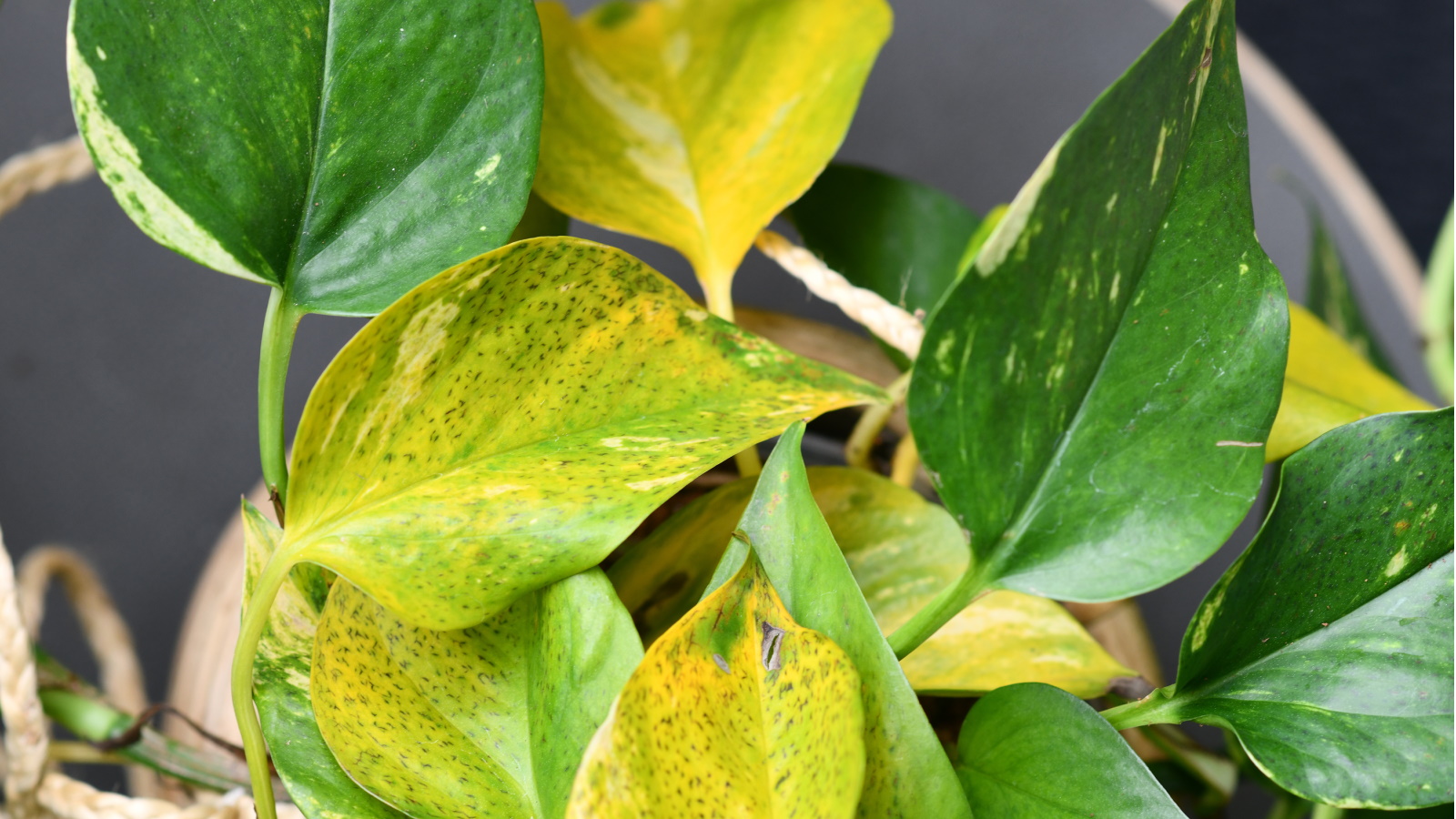
There are few things more disheartening than watching your beloved houseplants start to struggle. If foliage starts to turn yellow, droop or wilt, you might start to panic that your houseplant is dying.
Pothos, also known as devil's ivy, is suited to many rooms in a home, and, if you follow the general tips of pothos plant care, you will be rewarded with happy, healthy plants that flourish. However, there are a few indoor plant mistakes that can cause your pothos to turn yellow.
If you do see leaves start to change color on this trailing plant, it's an indication that its growing conditions aren't quite right. But don't worry, it's an easy fix. Here are the most common reasons your pothos is turning yellow and how to resolve this problem.

Why is my pothos turning yellow? A quick look:
Pothos plants are some of the easiest indoor plants to have in your collection, but they can still experience problems that cause yellowing leaves. Some of the most common causes of pothos plants turning yellow include:
- Overwatering
- Too much direct sunlight
- Too little light
- Incorrect room temperature
- Poor drainage
- Repotting mistakes
- Incorrect fertilizing
- Aging foliage
- Pests or diseases
Unfortunately, once your pothos leaves have turned yellow it is unlikely they will go green again. This is because the plant absorbs remaining nutrients from the leaf and it dies back. Although, in some cases of a lack of nutrients, you can use treatments to revive your pothos and make the leaves green and bright once again.
9 reasons why your pothos is turning yellow
Among the best low-maintenance indoor plants, pothos have long, trailing stems that can grow up to eight feet long, making them ideal as plants for hanging baskets. But, if you grow them in the wrong conditions, you might start to notice their leaves turn yellow. Here are nine common causes and how to fix them.
1. Overwatering your pothos
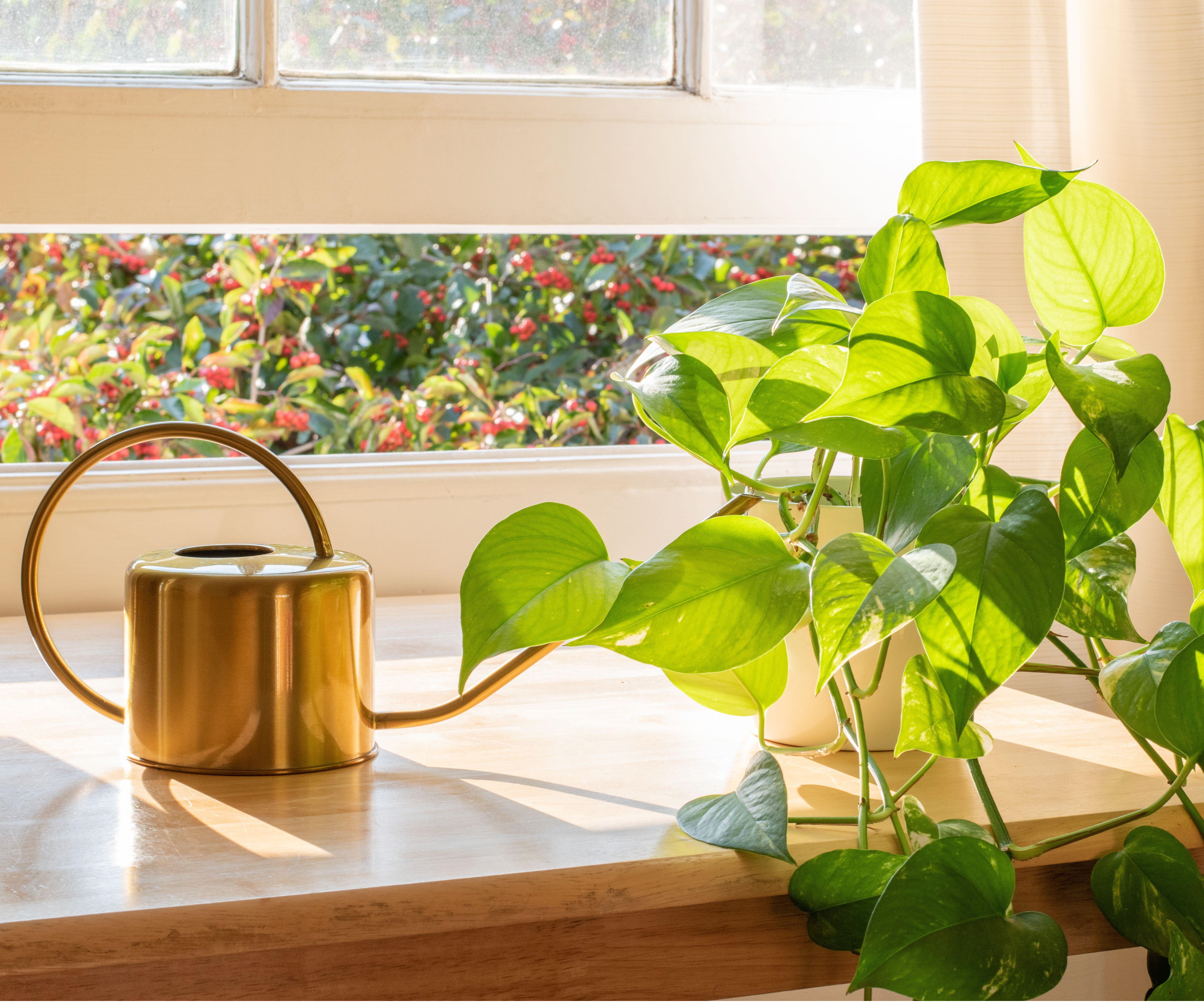
'One of the main causes for a yellowing pothos plant is irregular watering and moisture levels in its soil, particularly when the plant is watered too frequently,' explains Lindsay Pangborn, plant expert at houseplant provider, Bloomscape.
Pothos plants prefer to mostly dry before being watered again. Overwatering can cause houseplant root rot, resulting in discolored foliage. You'll know if your pothos is suffering from root rot if its roots have become mushy and brown.
This raises the question of how often should you water indoor plants? 'Typically, a pothos plant should only be watered when 50 to 75 percent of its soil volume is dry. Providing consistent moisture levels for a pothos plant can create less stress on the plant, preventing yellow leaves,' Lindsay adds.
It's easy to prevent this issue going forward. When watering indoor plants, like a pothos, it’s best to water deeply. 'I recommend always using a pot with a drainage hole. Add water slowly, allowing it to soak into the soil until the excess freely flows out of the drainage hole and into the saucer,' adds Lindsay.
Leaves on a pothos can also turn yellow when the plant is regularly allowed to dry out too much between watering. 'When the potting mix goes completely dry for too long, pothos will quickly respond with some yellow leaves, particularly the oldest leaves. If possible, you must never let the potting mix go completely dry,' says Raffaele Di Lallo, plant expert from Ohio Tropics.
Check, too, what water you are using as plants can react to the chemicals in tap water by yellowing. Try using filtered, bottle, or rainwater wherever possible. Using a soil moisture meter, available at Amazon, can also help you identify when your pothos is ready to be watered.
2. Too much sunlight
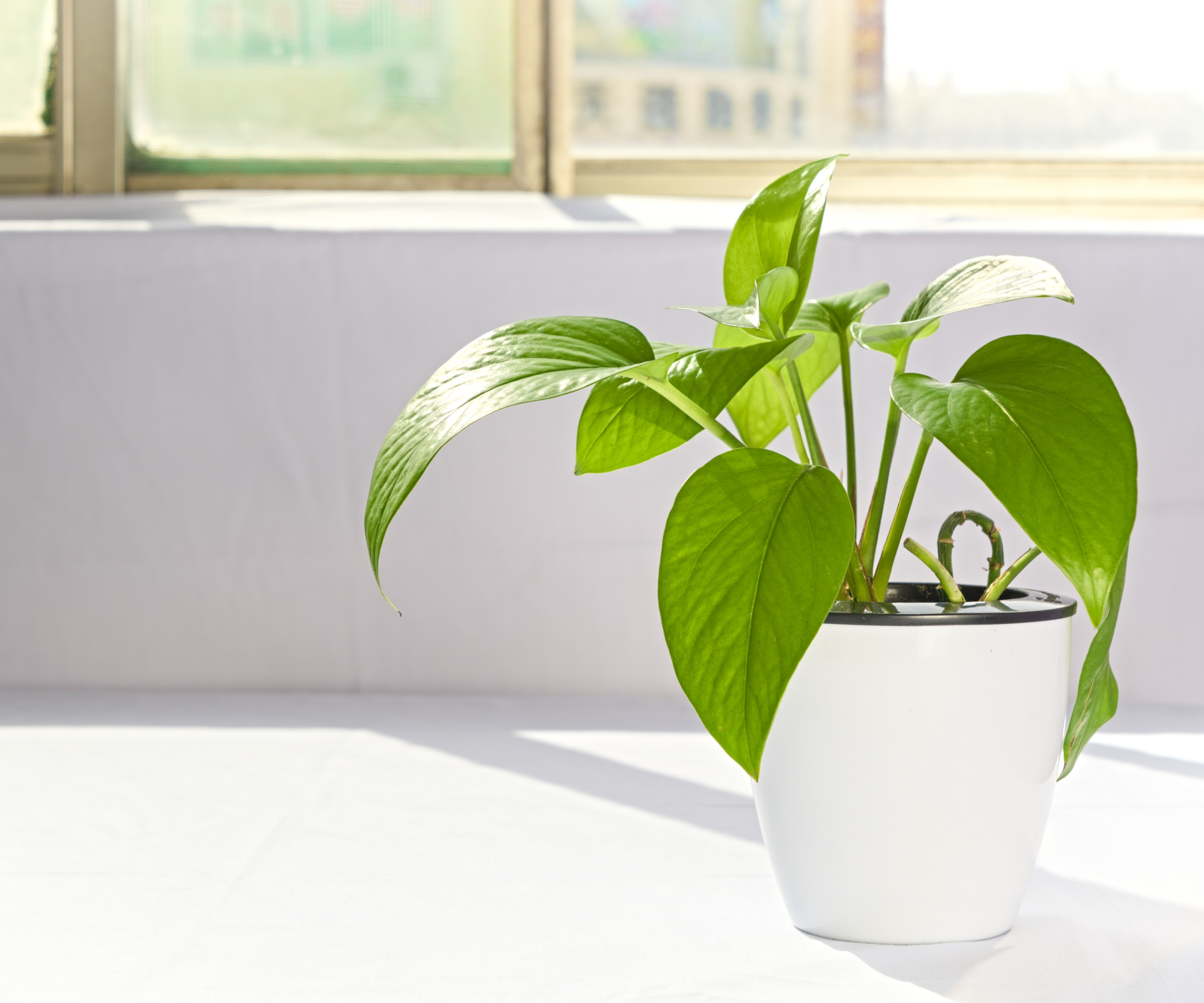
There are plenty of indoor plants for direct sunlight that thrive in a sunny position of a south-facing window, for example. However, pothos doesn't do well with too much direct sun exposure.
Too much sunlight can cause leaf scorch and burn the foliage of your pothos. As a result, your pothos leaves can turn yellow and wilt.
There are a few things you can do to avoid this, including using this sheer curtain from QVC to create dappled sunlight and protect your pothos' leaves. You can also try placing your pothos in a spot where it will receive bright, indirect light.
3. Too little light
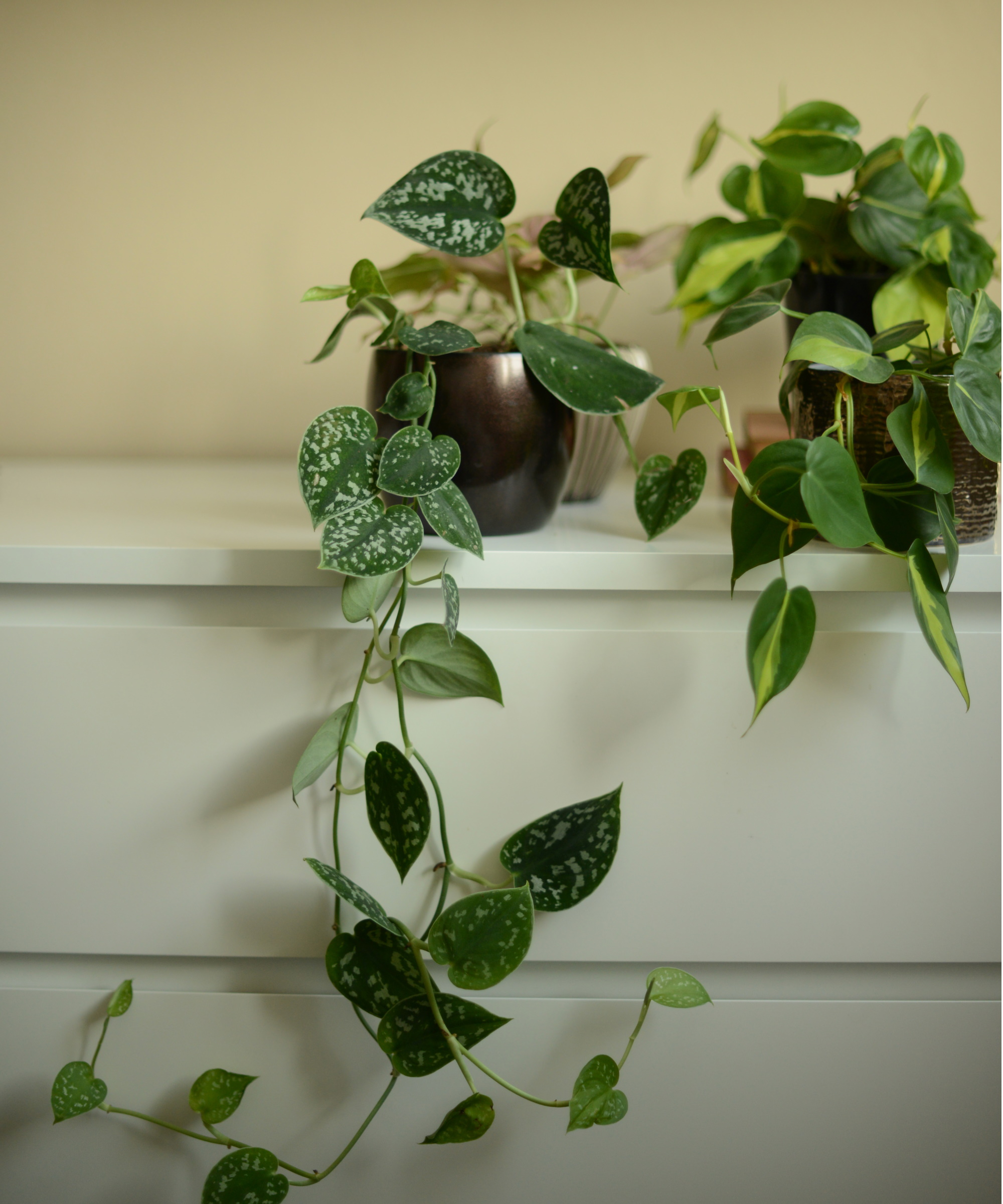
Pothos are among the best indoor low-light plants. 'They are very adaptable to multiple light settings ranging from indirect, bright light to low light. However, an abrupt transition to low light can cause leaf yellowing as the plant adjusts,' explains Lindsay.
'If a full pothos plant is thriving in bright light, a sudden switch to low light means it has a reduced ability to photosynthesize and can no longer support all of its existing leaves – leaves will yellow and drop in response,' she adds.
To avoid leaf yellowing when placing pothos in a low-light position, transition plants slowly to their new environment. Acclimatize them over the course of a week to gradually decrease light levels.
'Pothos need a northern or eastern window for perfect conditions. Sitting your pothos three feet away from a window with little indirect light will turn the leaves yellow. Without supplemental lighting, plants that can survive in low light still need to be near a northern or eastern window,' says Debbie Neese, horticultural advisor at Lively Root.
4. Incorrect room temperature
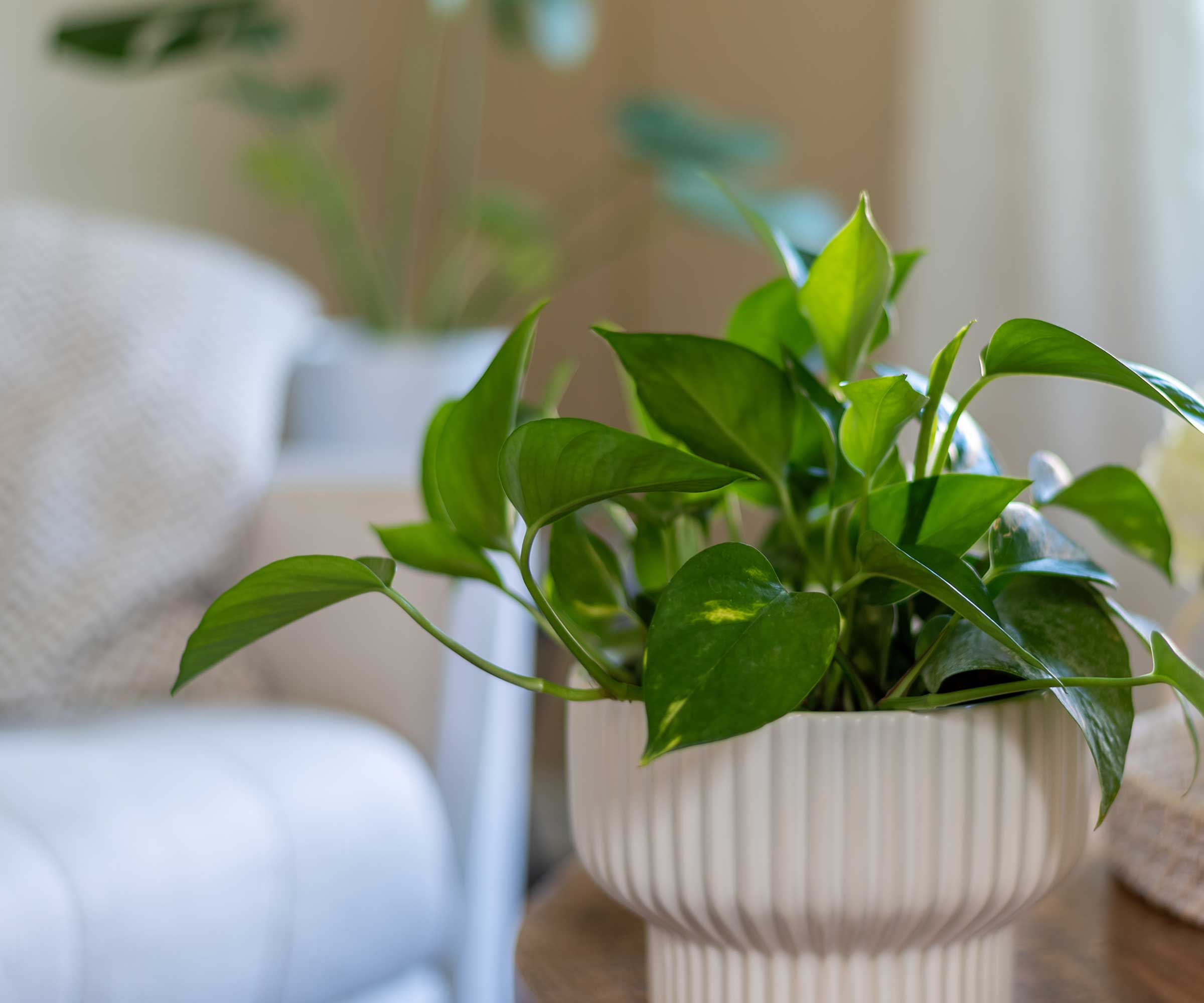
Changes in temperature or humidity can cause stress to the plant, which can lead to your pothos turning yellow. This is especially true when your pothos is exposed to air that is above or below average room temperature, as they tend to do best in temperatures between 65-85°F.
The winter months, in particular, can be especially hard for houseplants. 'Between the heater kicking on in the winter and the air conditioner blowing in the summer, your plant may feel the breeze. With tropical indoor plants, their leaves can often turn yellow and drop because of temperature changes in your home. Near a drafty window, door or air vent can discolor the leaves from the temperature change,' explains Debbie.
Pothos also enjoy higher humidity levels between 50-70 percent, making them a good choice as a bathroom plant. Luckily, there are lots of ways to increase humidity for indoor plants.
'Investing in a hygrometer, available at Amazon, can help you monitor the amount of humidity your plants are getting. While the heat is on in some areas, it will take more work to maintain adequate levels in the winter. Adding a humidifier close by or grouping plants together on pebble trays can help increase the humidity,' adds Debbie.
5. Poor drainage
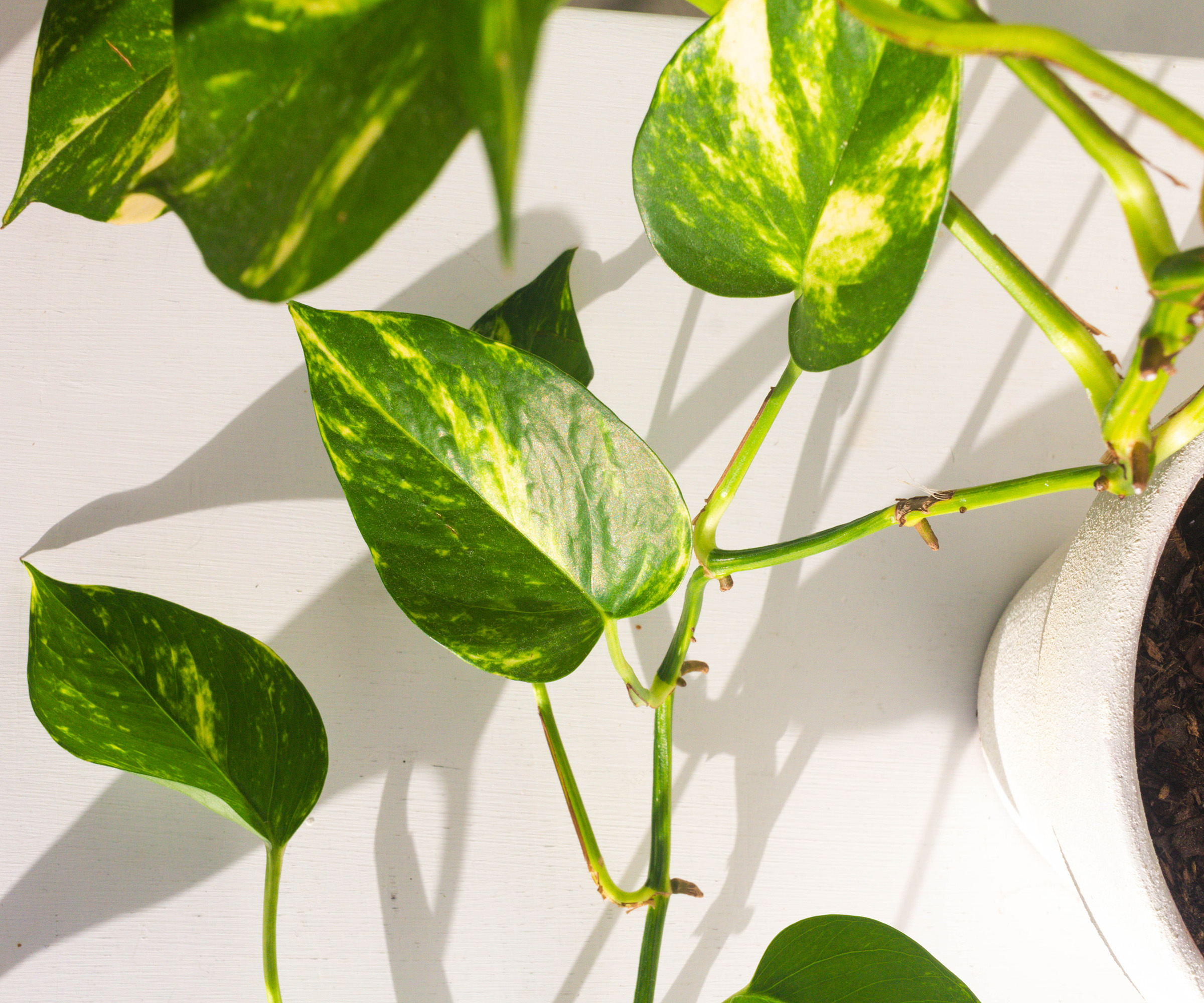
'Poor drainage is also another sign of yellowing leaves on a pothos. If the water is sitting in the cache pot after watering for more than 30 minutes, the plant's roots will drown. They need oxygen, so submersing them in water can damage the roots,' notes Debbie.
It's best to lift the plant out of the cache pot and take it to the sink to allow excess water to drain away.
'Always use a pot with a drainage hole. Excess water should always be removed from the saucer. Allowing it to remain can lead to root rot which can kill the plant,' adds Lindsay Pangborn.
There are so many pots to aid drainage available on the market, like these plant pots with drainage from Amazon, so you can find one that suits your interior aesthetic.
6. Repotting mistakes
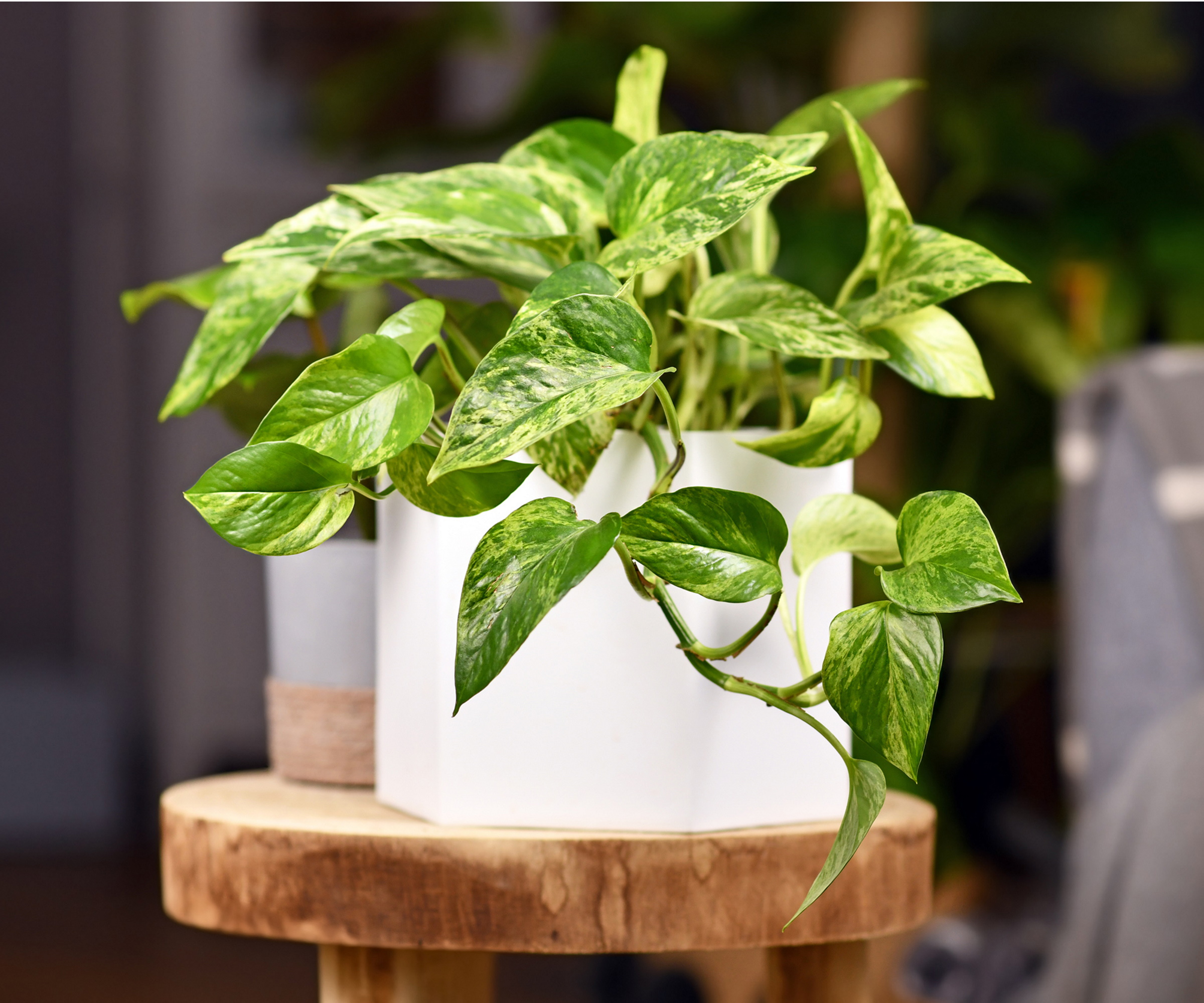
Pothos leaves turning yellow might also be a sign that your pothos is in need of repotting. Houseplants growing in pots too small for them can become pot-bound, resulting in discolouring foliage.
'If your plant has become really root bound in its pot, then it may become difficult to keep the roots sufficiently hydrated, and this can result in yellow leaves. In this case, it would be important to move the plant to a slightly larger pot,' says Raffaele Di Lallo, plant expert from Ohio Tropics.
Always choose a pot that is slightly larger than the current container when repotting a pothos, but take care not to choose one that is significantly larger. This could result in the soil taking more time to dry out, oversaturating your pothos' roots and leading to root rot.
'If the roots have started to rot, it would also benefit from a repotting job,' Raffaele notes. 'You must physically observe the rotted roots though by taking the plant out of the pot,' he adds.
7. Incorrect fertilizing

Another common cause of discolored pothos leaves is when plant parents make fertilizing mistakes. Like many other houseplants, pothos can benefit from being fertilized to boost its nutrients. However, too much fertilizer can harm the plant's roots in the form of root burn or oversaturation.
'We recommend fertilizing your pothos every two to three months during the spring and summer. There is no need to fertilize in the winter when the plant is getting less light and going through a dormancy period,' says Debbie Neese.
On the other hand, a lack of nutrients can also cause your pothos to turn yellow. Using this pothos fertilizer from Amazon can give your plant the right boost and encourage healthier growth.
Always pay attention to NPK plant fertilizer numbers on different products so that you're giving your pothos the right plant food. A higher nitrogen number will aid leaf growth.
8. Aging pothos foliage
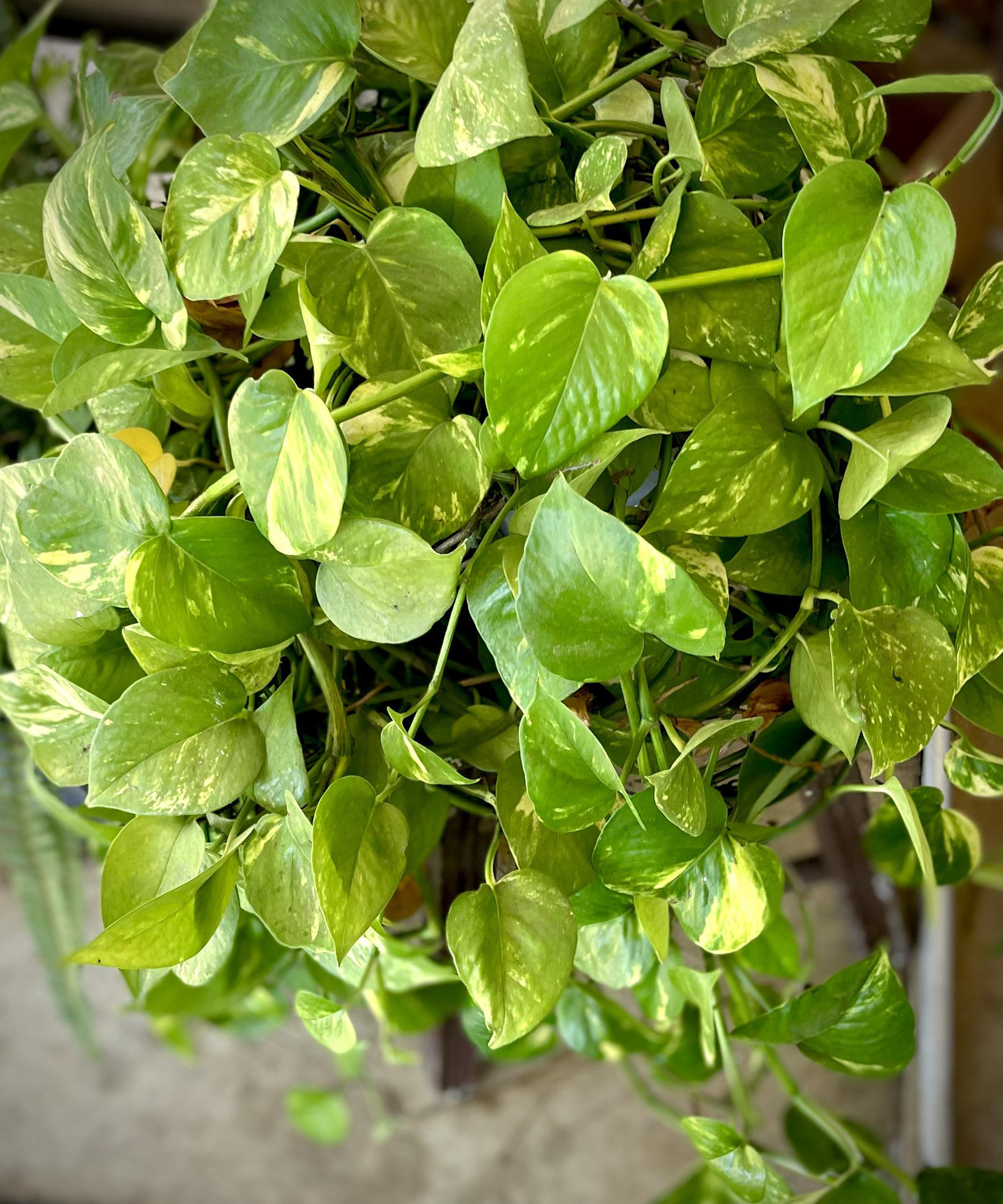
Of course, your pothos leaves may also be turning yellow from age. 'No leaf will last forever. Even under good growing conditions and attention to proper soil moisture, you may see an occasional old leaf turning yellow,' says Raffaele. 'As long as you don't see too many leaves yellowing, there is no reason to worry,' he adds.
If you do spot one or two leaves turning yellow, you simply need to use essential gardening tools, like these pruning shears from Amazon, to prune your pothos plant and remove older leaves.
'When a pothos plant is experiencing new growth, its older leaves may begin to yellow since the plant is ready to shed its outdated leaves. This typically occurs on the vines closest to the soil,' adds Lindsay Pangborn.
9. Pests or diseases
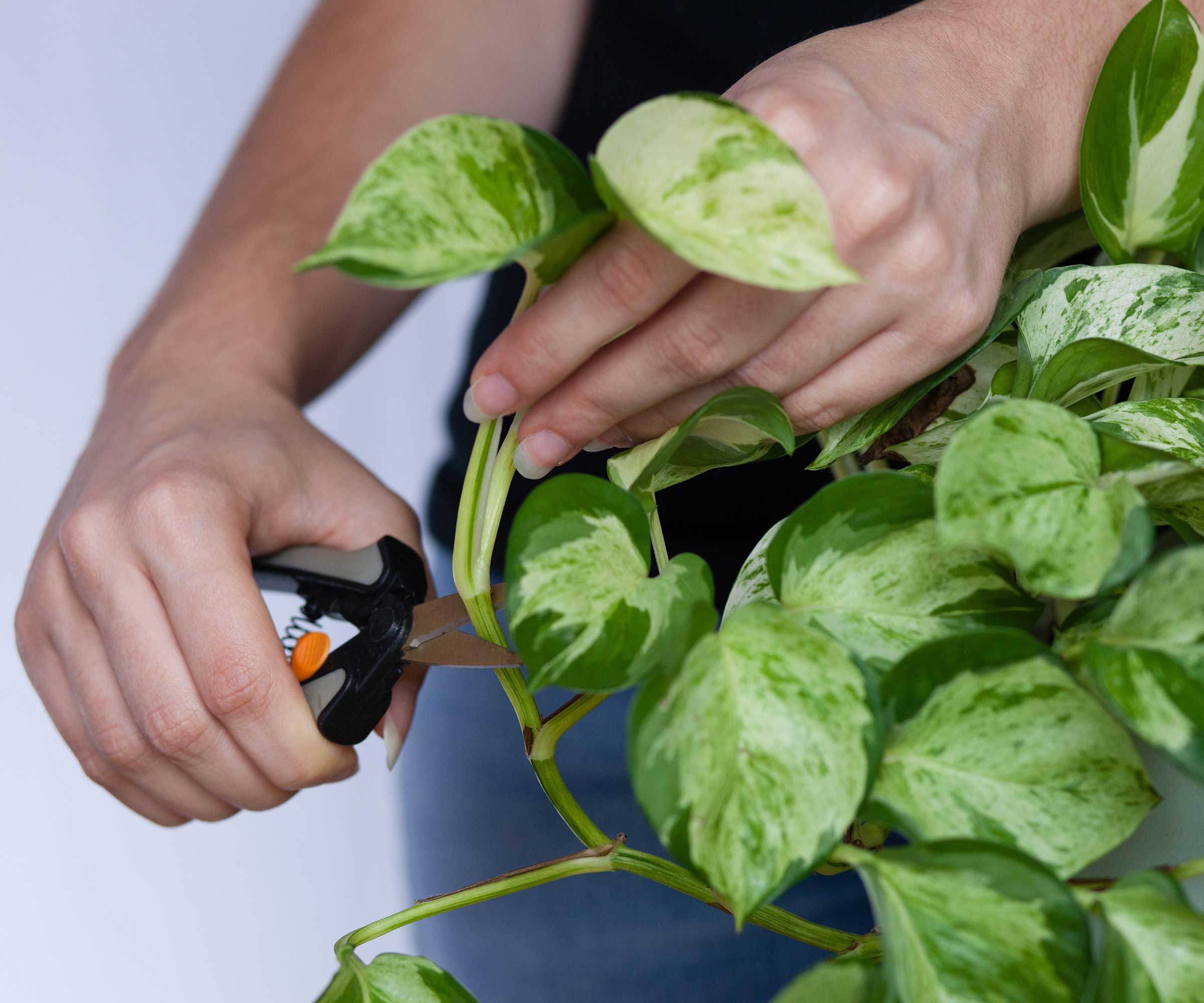
Pests and diseases can often be the cause of yellowing leaves, too. 'When facing an infestation of common houseplant pests, the sap is sucked out of the leaves, causing them to yellow. It will occur in a more mottled pattern and worsen over time. Common pests include spider mites, thrips and mealybugs,' says Lindsay.
'To make your pothos plant less susceptible to infestations, make sure it is fertilized and watered regularly – a healthy plant is more resilient.
'Clean the leaves regularly, which can help identify pest infestations early on. If an infestation has already started, I recommend using insecticidal soap (available from Amazon) to reduce pest populations,' she adds.
FAQs
Should I remove yellowing leaves on pothos?
It's a good idea to remove yellowing pothos leaves to ensure your plant isn't directing any energy towards it and focusing on new growth instead. It will also prevent pests from being attracted to the plant and tidy up its appearance. Just make sure to always clean your gardening tools after use to avoid the spread of potential pests and diseases.
Can yellow pothos leaves turn green again?
Once pothos leaves have turned yellow they will not turn green again. Once the plant has lost its chlorophyll – the green pigment – it will draw off any nutrients left in the leaf and effectively abandon it. The only exception to this is when a plant is suffering from a nutrient deficiency, then it might be possible to brighten the leaf color through fertilization. Generally, however, the yellow leaf will not recover, but as long as you address the cause of the pothos turning yellow, it will still have plenty of healthy green leaves left and you can prevent more leaves turning yellow.
Many of these causes can also be the reason behind your pothos wilting. These plants will quickly show you that something in their growing condition isn't right, so it's best to make adjustments as soon as possible to prevent further harm to their appearance and health.
Once you have revived your pothos and your have mastered your pothos care, then you can try propagating your pothos to grow more of these wonderful trailing indoor plants in your home.







